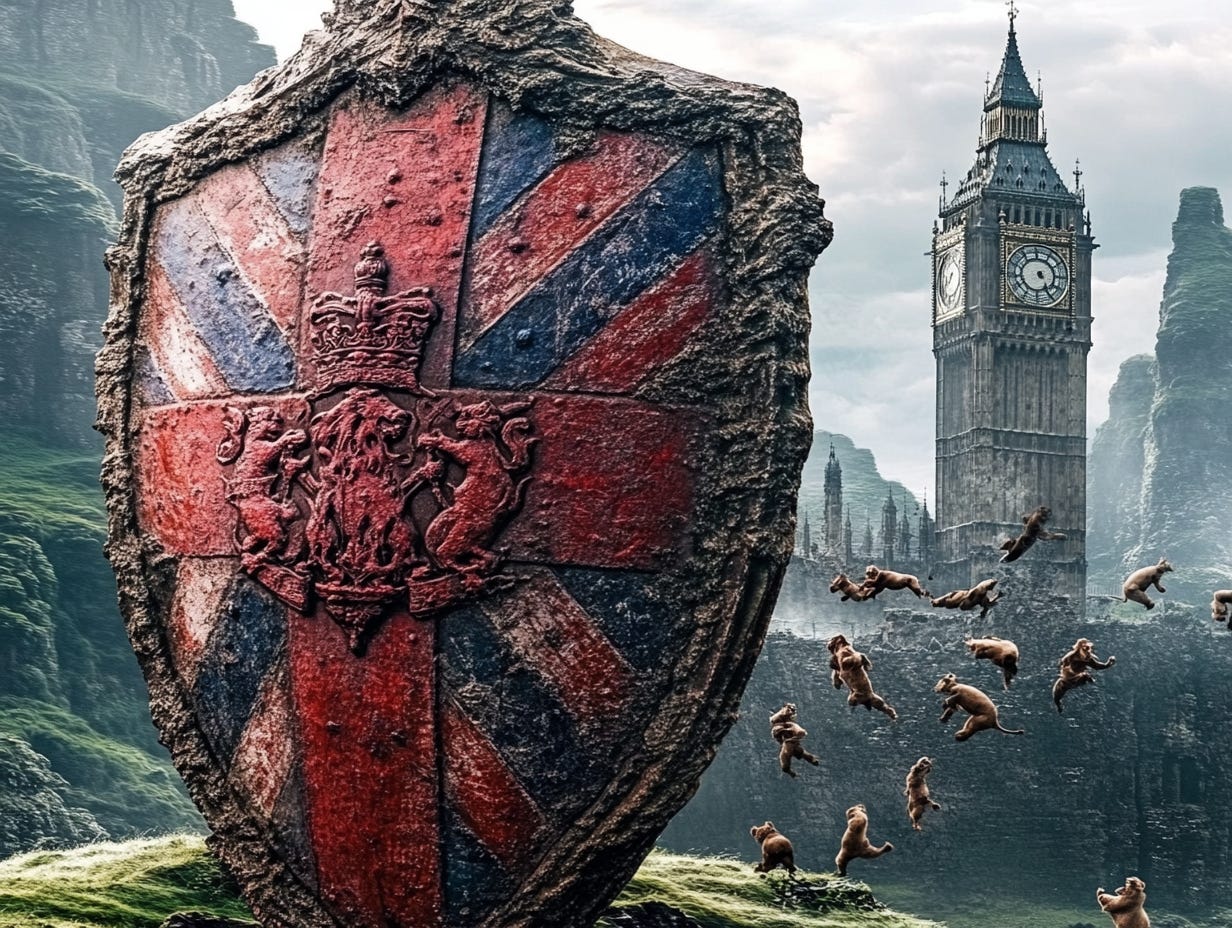A Warning for Britain’s Creatives: Can Legacy-Focused Policy Keep Up?
Why Propping Up Legacy Gatekeepers Could Sink Britain’s Creative Renaissance
On 23 June 2025, HMG unveiled its splashy manifesto “grow our creative industries by £50 billion GVA and create one million jobs by 2030”. The Creative Industries Sector Plan was published. In it, Ministers spoke of Britain ascending to “creative superpower” status. Yet as the ribbon was still uncut, critics noted that creative GVA actually contracted 3.3% in 2023, even as the wider economy edged up 0.3% , and that barriers to entry for creators are now almost zero - anyone can launch a YouTube channel, TikTok feed, Substack newsletter or Medium publication from their phone. Is this top-down playbook trying to steady a sinking ship of legacy gatekeepers even as the tide of individual creators rises?
HMG’s deep desire is to harness creativity as a national growth engine, and to keep revenues on home soil. Yet its centralised delivery - funneled through BBC, ITV, major studios and trade bodies - clashes with a creator economy where trust has shifted from corporations to individuals. Meanwhile, GVA as a metric is vulnerable to input-cost inflation: when energy and material prices spike, GVA can dive even if actual output holds steady . The real tension: shore up yesterday’s giants, or empower tomorrow’s disruptors on platforms like YouTube, Spotify, Substack and Medium?
Unbowed, HMG activated its industrial-strategy toolkit:
Tax reliefs for film, TV and video games
A £270 million Arts Everywhere Fund plus hundreds of millions for Creative Clusters R&D
Skills hubs and apprenticeships administered by established training bodies
This was HMG’s moment of resolve. A government heavyweight stepping into cultural policy, determined to “back talent everywhere.”
Critical factors to consider:
Pre-pandemic boom: Between 2010 and 2023, creative GVA rose 35%, outpacing the UK economy’s 22% gain .
2023 downturn: Despite fresh support, GVA fell 3.3%, while overall UK GVA ticked up 0.3%.
Skills crunch: 65% of firms report hard-to-fill roles in VR/AR and Createch .
Platform revenue vacuum: Most creators pocket only fractions of pennies per stream - YouTube, TikTok and Spotify capture most value .
AI licensing battleground: Generative AI trains on copyrighted works without consent, sparking an opt-in vs. opt-out fight that will decide if human creators retain IP control.
Brexit-era frictions: UK musicians and theatre troupes must navigate new visa and customs hurdles to tour Europe; yet the Plan barely mentions these barriers.
Platform-native insurgency: Independent podcasters on Substack, newsletter entrepreneurs on Medium, niche livestreamers on Twitch; they’re building direct audiences and monetisation models far outside HMG’s legacy channels.
To avoid being outpaced, HMG must pivot from propping up incumbents to building bridges with disruptors:
Recalibrate Metrics - Supplement GVA with gross output and volume-adjusted indicators to reflect true production, not just price-driven swings.
Platformise Legacy Media - Mandate that broadcasters and publishers receiving tax relief open APIs, revenue-share pools and creator portals - so indie innovators can plug in and keep revenue in the UK.
Seed a “Digital Disruptors Fund” - Direct grants to platform-native creators - podcasters, vertical-video studios, micro-publishers on Substack/Medium - under lighter compliance to supercharge next-gen British talent.
Establish a clear AI-training framework - Mandate transparent, tiered rules that define what counts as fair use versus infringement, require explicit opt-in consent from creators, and ensure proportional compensation whenever their work feeds an AI model.
Tackle Post-Brexit Barriers - Negotiate bespoke creative-sector visa accords with the EU and replace lost Creative Europe funding with targeted UK schemes.
…to conclude:
The genie of creative disruption is out of the bottle, and it’s not living in Whitehall. If HMG truly wants a creative superpower, it must persuade legacy media to become open platforms or fuel entirely new ones, harnessing the galvanizing energy of YouTubers, TikTokers, Substack authors and Medium publishers. Otherwise, the Grand Vision risks being no more than a glossy brochure - a command-and-control blueprint watching from the bridge as the real revolution sails past.
Podcast version of this article
🗣️ This is part of Media Unmade - a series about how media breaks, reforms, and adapts in the age of AI and creator autonomy.
💬 What form is your story taking right now? Where is it going next?


